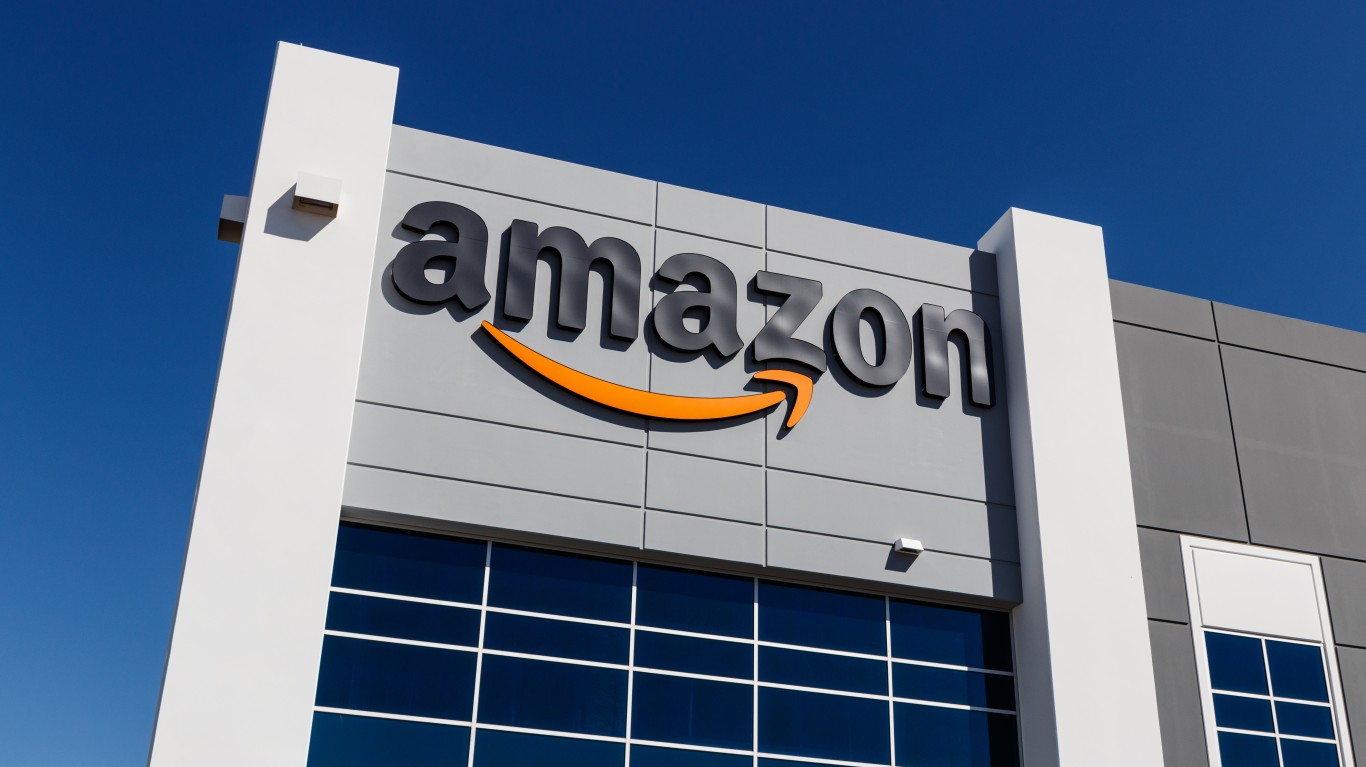
All three major U.S. equity indexes posted dips of less than 1% Thursday, likely due to general ennui over an equities market that cannot seem to get any traction on a slippery slope. Walmart, Target and Cisco were among the day’s leading losers.
After markets closed Thursday, Applied Materials reported top-line and bottom-line numbers that missed expectations thanks to coronavirus lockdowns in China. Without getting specific, the company said that next year will be better than this year. Shares traded down about 2% in mid-morning trading Friday.
Palo Alto Networks beat estimates on both the top and bottom lines, and the company raised earnings per share (EPS) and revenue guidance. The stock traded up nearly 10% early Friday.
Ross Stores missed estimates on both the top and bottom lines. The stock was hammered Friday morning, down more than 22%.
Deere beat the consensus EPS estimate by 1.8% and missed on revenue. Net income guidance was raised, mostly due to a one-time gain of $220 million in the current quarter. Shares traded down more than 10%.
Foot Locker also beat the consensus EPS estimate and missed on revenue. The company reaffirmed fiscal year guidance and said it expects same-store sales to be down 8% to 10%. Shares traded up 5.2% in mid-morning action Friday.
We already have previewed three companies set to report quarterly results late Monday or early Tuesday: Frontline, Xpeng and Zoom Video.
Here is a look at four more firms set to report earnings on before U.S. markets open Tuesday morning.
Abercrombie & Fitch
Specialty retailer Abercrombie & Fitch Co. (NYSE: ANF) has shed about 30% of its share price over the past 12 months. Analysts have set expectations for the April quarter about as low as they possibly could while maintaining a slightly smiling face. The teen fashion retailer missed estimates for both earnings and revenue in the previous quarter, and those estimates were not especially difficult targets. Has the company worked through its inventory headaches? What impact does it foresee from inflation? We shall find out Tuesday morning.
Analysts remain bullish on Abercrombie stock, likely because they have set expectations so low. Five of 10 brokerages have a Buy rating and four more have a Hold rating. At the recent price of around $29.10 a share, the upside potential based on a median price target of $40.00 is 37.5%. At the high price target of $59.00, the upside potential is 102.7%.
Consensus estimates call for Abercrombie to post revenue of $799.33 million in the first quarter of fiscal 2023. That would be down more than 31% sequentially but up 2.3% year over year. Adjusted EPS are tabbed at $0.09, down 92.5% sequentially and 86.6% lower year over year. For the full fiscal year just ended, analysts expect EPS of $3.41, down 21.7%, on revenue of $3.84 billion, up 3.5% compared to fiscal 2022.
The stock trades at around 8.5 times expected 2023 EPS, 7.1 times estimated 2024 earnings of $4.07 and 6.1 times estimated 2025 earnings of $4.75 per share. The stock’s 52-week trading range is $26.47 to $48.97, and the company does not pay a dividend. Total shareholder return for the past year was negative 28.3%.
Best Buy
Over the past 12 months, shares of technology retailer Best Buy Co. Inc. (NYSE: BBY) have plunged 35.5%. Since shares traded at a 52-week high in late November, the stock has fallen by 46%. It hit its 52-week low on Thursday, following disappointing quarterly reports from mega-retailers Walmart and Target. Store traffic reportedly is down, and the overall macroeconomic picture is not kind to retailers, which have to figure out a way to beat rising costs due to inflation and higher interest rates that make it more costly for consumers to buy big-ticket items.
Analysts have mixed sentiments on the stock. Of 27 brokerages covering it, 14 rate the shares at Hold and 11 have a Buy or Strong Buy rating. At a share price of around $73.30, the upside potential based on a median price target of $120.00 is 63.7%. Based on a high price target of $150.00, the upside potential is almost 105%.
For the company’s fiscal 2023 first-quarter revenue, analysts are forecasting $10.46 billion, down 36.1% sequentially and 10.1% lower year over year. Adjusted EPS are forecast at $1.59, down 41.9% sequentially and 28.7% year over year. For the full fiscal year ending in January, current estimates call for EPS of $8.94, down 10.7%, on sales of $50.15 billion, down 3.1%.
The stock trades at 8.2 times expected 2023 EPS, 7.0 times estimated 2024 earnings of $10.40 and 5.9 times estimated 2025 earnings of $12.52 per share. The stock’s 52-week range is $72.36 to $141.97. Best Buy pays an annual dividend of $2.98 (yield of 4.8%). Total shareholder return for the past year is negative 33.7%.
NetEase
China-based NetEase Inc. (NASDAQ: NTES) operates online gaming, communications and commerce services in China and elsewhere. It also owns another U.S.-traded online services company, Youdao. Over the past 12 months, the stock has dropped by 11.2%, and its 52-week high, set one year ago, is about to roll off.
Recent pronouncements by Chinese officials appear to have reduced investors’ fear that NetEase will have to delist its shares from U.S. exchanges. NetEase trades American depositary receipts (ADRs) in the United States. One ADR is equal to five ordinary shares traded in Hong Kong.
All 27 brokerage houses covering the stock have a Buy or Strong Buy rating. At a share price of around $95.35, the stock’s implied gain based on a median price target of $123.83 is 29.9%. At the high price target of $144.61, the upside potential is around almost 52%.
Analysts are forecasting first-quarter revenue of $3.47 billion, down 9.6% sequentially but 10.9% higher year over year. The estimate for adjusted EPS of $1.04 is down by more than 33% sequentially and by about 8.8% year over year. For full 2022, analysts are looking for EPS of $4.52, up 390%, on a year-over-year sales increase of 7.6% to $14.83 billion.
The ADRs trade at 21.8 times expected 2022 EPS, 18.8 times estimated 2023 earnings of $5.25 and 17.2 times estimated 2024 earnings of $5.74 per ADR. NetEase’s 52-week range is $68.62 to $120.84, and it pays an annual dividend of $1.17 (yield of 1.183%). Total shareholder return for the past year was negative 15.9%.
Petco
Shares of pet food and supply retailer Petco Health and Wellness Co. Inc. (NASDAQ: WOOF) have dropped almost 41% over the past 12 months. Since reaching a 52-week peak in mid-June, the stock is down almost 46%. Free cash flow was negative $5 million in the prior quarter, the first time in five consecutive periods that Petco has burned cash. That is not a big deal, but it could indicate falling margins, and that could be a bigger deal.
Analysts are bullish on the stock. Of 13 brokerages covering it, eight have a Buy or Strong Buy rating and four rate shares ta Hold. At a share price of around $15.60, the upside potential based on a median price target of $25.00 is about 60%. At the high price target of $31.00, the upside potential is nearly 99%.
For the company’s first quarter of fiscal 2023, analysts expect revenue of $1.45 billion, down 4% sequentially and up 2.8% year over year. Adjusted EPS are forecast at $0.15, down 45.9% sequentially and 11.8% lower year over year. For the full fiscal year ending in January, EPS are forecast at $0.99, up 8.5%, on sales of $6.2 billion, up 6.8%.
Petco stock trades at 15.8 times expected 2023 EPS, 14.3 times estimated 2024 earnings of $1.09 and 13.4 times estimated 2025 earnings of $1.17 per share. The stock’s 52-week range is $15.00 to $28.73. Petco pays no dividend. Total shareholder return for the past year was negative 38.4%.
100 Million Americans Are Missing This Crucial Retirement Tool
The thought of burdening your family with a financial disaster is most Americans’ nightmare. However, recent studies show that over 100 million Americans still don’t have proper life insurance in the event they pass away.
Life insurance can bring peace of mind – ensuring your loved ones are safeguarded against unforeseen expenses and debts. With premiums often lower than expected and a variety of plans tailored to different life stages and health conditions, securing a policy is more accessible than ever.
A quick, no-obligation quote can provide valuable insight into what’s available and what might best suit your family’s needs. Life insurance is a simple step you can take today to help secure peace of mind for your loved ones tomorrow.
Click here to learn how to get a quote in just a few minutes.
Thank you for reading! Have some feedback for us?
Contact the 24/7 Wall St. editorial team.

 24/7 Wall St.
24/7 Wall St. 24/7 Wall St.
24/7 Wall St.



